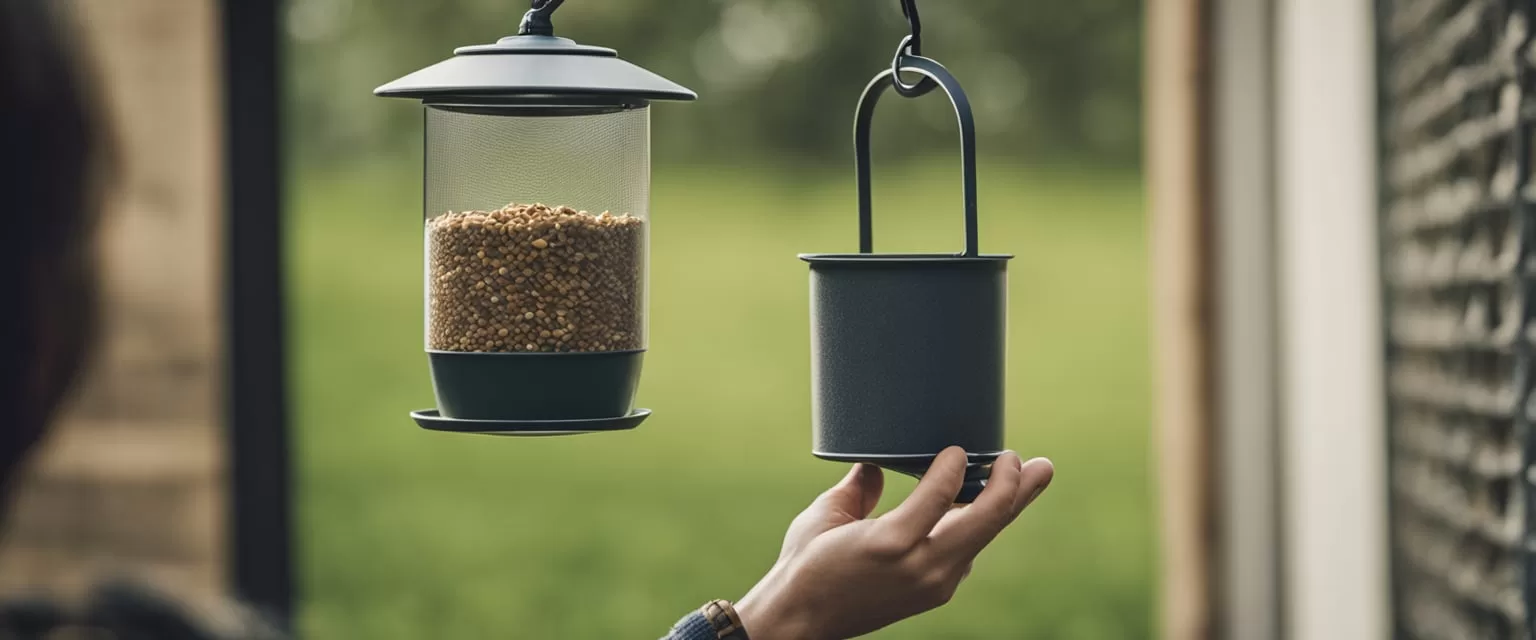Essentials for Creating a Bird-Friendly Environment
To transform a small space into a bird oasis, several key elements must be addressed. These include providing suitable feeders, a reliable water source, and planting native flora that offers both food and shelter.
Choosing the Right Bird Feeders and Food
Selecting compact bird feeders is crucial in a small space. Tube feeders, platform feeders, and window feeders are excellent choices. They can accommodate various bird species and fit seamlessly into tight areas.
For food, using a mix of sunflower seeds, millet, and nyjer seed can attract a diverse range of birds. Suet cakes may also be used during colder months for high-energy nutrition. Regular maintenance is essential; clean feeders regularly to prevent mold and attract more birds.
Providing Water with Bird Baths and Features
A clean water source is vital for birds’ survival. In a small area, opt for compact bird baths or even shallow dishes. They can be placed on a balcony rail or patio table.
To maintain water cleanliness, change it daily and scrub away algae regularly. Adding a small water feature, like a fountain, can create movement, attracting birds with its sounds and reflections.
Selecting Plants and Flowers for Attraction and Shelter
Incorporating native plants is essential for creating an effective habitat. They provide natural food sources and shelter, crucial for birds. Examples include sunflowers, coneflowers, and native shrubs that offer berries.
Vertical gardening is a great strategy, utilizing trellises or wall planters. Additionally, containers can be positioned to maximize space and provide food throughout the seasons. These plants support insects that birds prey on, creating a balanced ecosystem within the limited area.
Optimizing Small Outdoor Spaces for Avian Visitors
Small outdoor areas such as balconies or patios can still serve as inviting habitats for birds. By utilizing vertical gardening techniques and innovative hanging solutions, it is possible to create a bird-friendly environment that attracts various species.
Vertical Gardening and Container Use
Vertical gardening maximizes limited space by allowing plants to grow upward rather than outward. This method is particularly useful in compact environments.
Container gardens can include bird-friendly plants like sunflowers, asters, and lavender, which attract a range of backyard birds. These plants can be placed on shelves or hung from walls, making their vibrant colors and scents more accessible.
Adding a small water feature such as a fountain can enhance the garden’s appeal, providing birds with essential hydration. This setup benefits both the birds and the small outdoor space, turning it into a thriving mini-habitat.
Innovative Hanging Solutions for Feeders and Plants
Hanging feeders and planters offer an effective way to use available vertical space. They can be secured to railings, walls, or even from hooks suspended overhead.
For feeding, opting for compact bird feeders that hold various seeds will cater to different species. Niger seeds and mixed bird food are beneficial choices.
In addition, hanging small baskets with nectar-rich flowers can attract hummingbirds. These spaces can be further enhanced by installing lightweight birdhouses, offering nesting options while conserving ground space.
Through these methods, small outdoor areas can flourish as vibrant oases for avian visitors.
Maintenance and Considerations for a Bird Oasis
To create a thriving bird oasis, proper maintenance and careful consideration of challenges are essential. This includes safeguarding birds from predators and pests while ensuring regular upkeep tailored to seasonal changes.
Protecting Birds from Predators and Pests
The presence of pets, squirrels, and other pests can threaten bird visitors. To minimize these risks, bird feeders should be placed in locations that are difficult for predators to access. For instance, hanging feeders away from trees or structures helps reduce ambush opportunities.
Consider using squirrel-proof feeders and integrating protective barriers around feeding areas. Also, avoid using harmful pesticides or herbicides in the vicinity, as these chemicals can harm birds directly or disrupt their food sources. Opting for organic alternatives ensures a safer environment.
Specific bird species may also react differently to environmental threats. Research the local bird populations to identify effective deterrents, such as visual predators like plastic owls or reflective objects that can keep them at bay.
Regular Upkeep and Seasonal Adjustments
Regular maintenance of feeders and baths is crucial for attracting birds consistently. This includes cleaning feeders and baths weekly to prevent the spread of diseases. Stagnant water can grow algae, so replacing water in baths every few days is essential.
Additionally, seasonal adjustments can enhance the attractiveness of the oasis. For example, during migration periods, varied food options should be provided, catering to different species’ feeding habits. Planting a mix of native plants can also support insects, which are food sources for many birds.
If local temperatures fluctuate, ensuring that water sources do not freeze may involve using a birdbath heater. Keeping these elements well-maintained encourages a consistent bird presence throughout the year.
Share this content:

Post Comment
You must be logged in to post a comment.